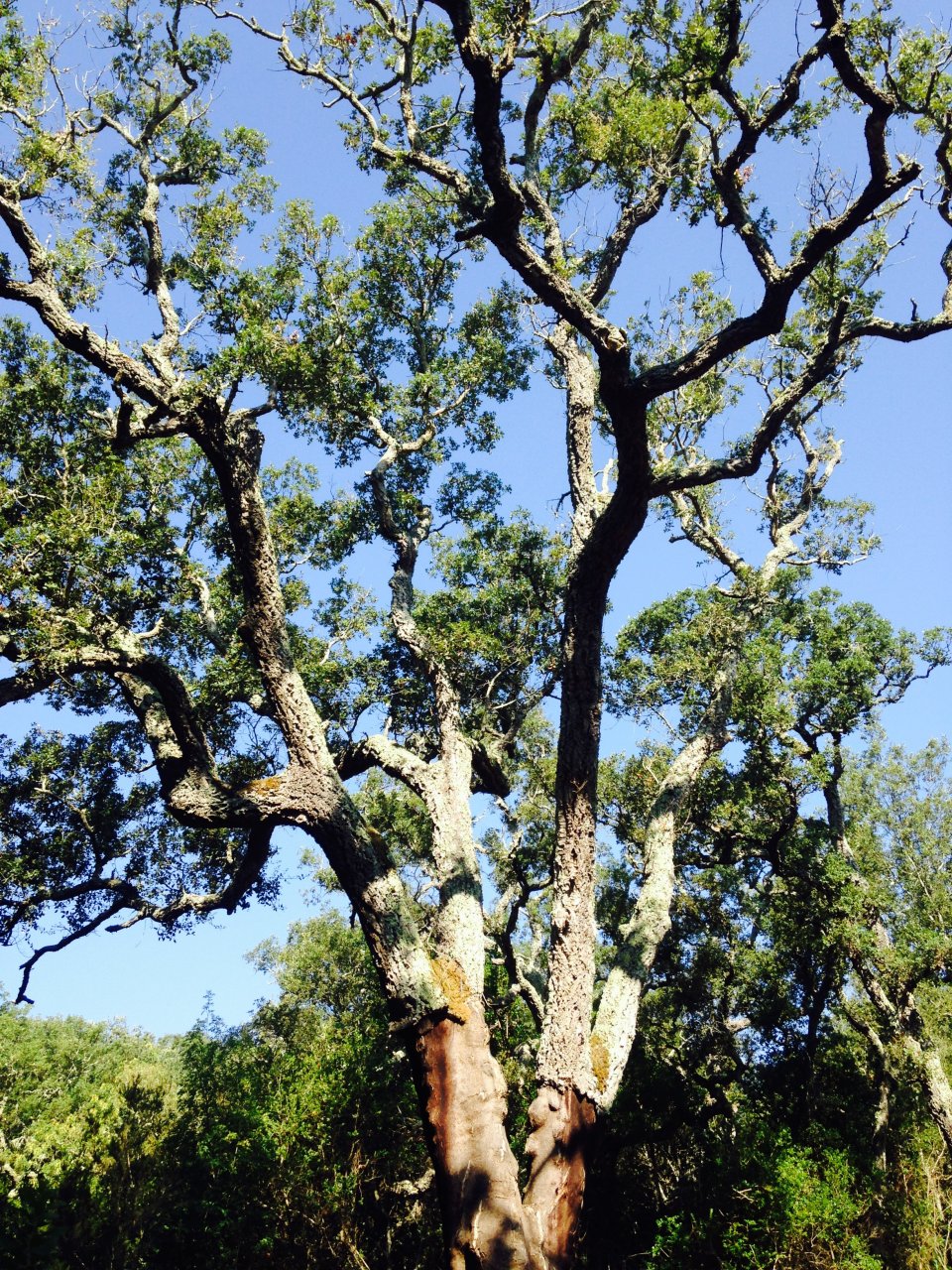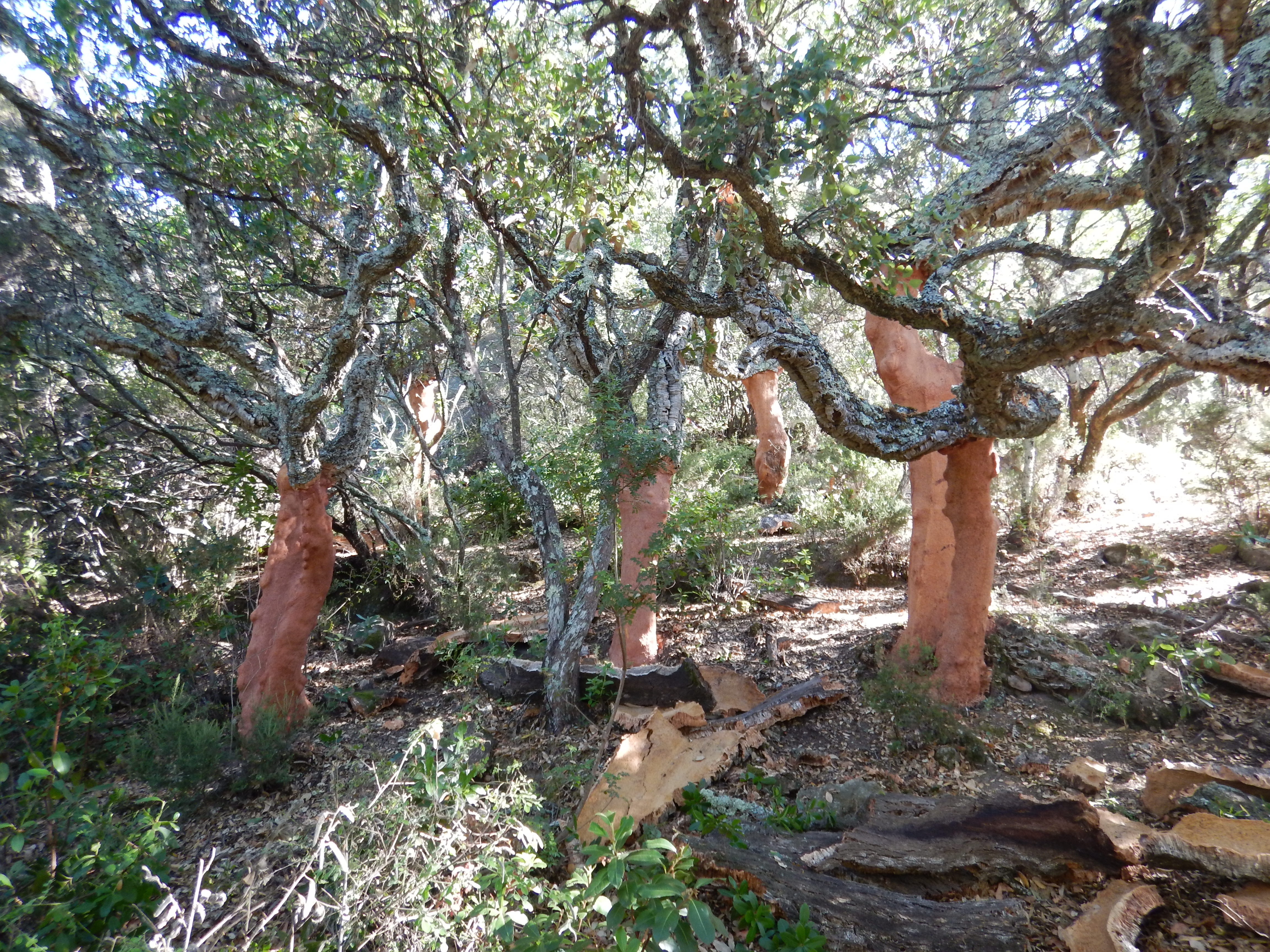
The objective of this study is to establish a vigilance map to identify the areas where cork oak is adapted or inadapted to the forest station in a context of changing climate, through the BioClimSol tool developed by CNPF. This tool allows the collection and analysis of field data (soil, climate, sanitary conditions, ...). The vigilance map, by forecasting and locating the risks of decline of the Corsican cork oaks, will help managers take management decisions. The objective is to make silvicultural proposals in order to prevent and limit the risks of dieback.
The Corsican forests represent a vital economic, environmental and heritage issue for the Island. These forests located at the confluence of various climates are very sensitive to climate change. The cork oak is of great economic interest (cork, insulation,...) for the island and constitutes an habitat of community interest (9330 - Quercus suber forest) with an important environmental and patrimonial wealth. Faced with the observed decline of cork oak in Corsica, it seems essential to understand the causes and to quantify the impact of climate change on this decline in order to guide silvicultural management.
According to the ARCHI method, developed by IDF, 67% of the 2000 trees prospected are healthy, 31% are stressed or resilient and 2% are dying.
The trees underexploited for their cork are stressed or dying.
Competition from vegetation in the overstory increases the stress or dieback of the oaks.
Water deficit accentuates the harmful effect of competition from vegetation.
Thus, in order of importance, the factors that can explain the observed stress and dieback are: underexploited, competition from vegetation and finally the water deficit (climate change).
The BIOCLIMSOL tool has made possible to draw up vigilance maps on which the probability of the risk of stress or cork oak dieback is quantified.
Forest owners can call on the CRPF of Corsica to carry out a climatic diagnosis of their cork oak plantation in order to estimate the adaptability of the cork oak to the station.
To limit the injuries of the trees, it is important to respect the favourable periods, the climatic conditions and the heights of exploitation of cork. The exploitation of cork must be done on healthy trees.
To optimise the conduct of silvicultural work, access to the stands must be favoured. Manual cleaning work around the trees must be favoured to avoid injuries. A forest cover of 60% must be maintained in the cork oak forests and the competing species, in particular in the dominant stage, must be removed.
The study allows the integration and materialization of the climate variable through modelling in order to consider it in forest diagnostics for field management. The study is based on the BIOCLIMSOL tool developed by the CNPF.
Due to the low proportion of dying trees observed, the definition of the vigilance maps had to include stressed trees as well. The factors involved in a dieback are multiple. Some are difficult to identify in the field and may be responsible for the health quality of the trees observed.
To go further on the subject of cork oak decline in Corsica, it would be interesting to analyse from existing studies, the influence of the understorey on the water balance of the stand. This knowledge would help manage the understorey and find a balance between its maintenance and its total exploitation. It would also be interesting to study the quality of the natural regeneration of the understorey as a function of the water deficit in order to estimate the potential risks of climate change on the renewal of the stands.
Florian GALINAT, florian.galinat@crpf.fr, https://corse.cnpf.fr/
Further information
BERRAHMOUNI N. & BESACIER C., (juin 2010). FAO Silva Mediterranea : Adaptation des subéraies au Changement Climatique : Nécessité de renforcer la coopération régionale ?. France, 19 p.
BOUHRAOUA R. & al., (juin 2010). Impact des variations climatiques « Le changement climatique et son impact sur les subéraies ». Algérie, 41 p
FORÊT ENTREPRISE, (septembre 2014). Numéro spécial BioClimSol – Supplément du Forêt entreprise 218 : un outil d’aide à la décision face au changement climatique. France, 15 p.
VARELA M-C., (juin 2009). Forêt méditerranéenne XXIX n°2 : dépérissement des peuplements de chêne-liège et changement climatique. France, p. 209-212.
CRPF de Corse

CRPF de Corse
